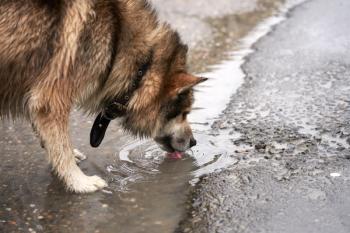Let’s face it. No one wants to admit they’re getting old, and the idea of beloved pets aging can be hard for veterinary clients to accept. But frequent examinations and professional care combined with appropriate care at home can help make pet aging a positive experience for both pets and their owners.
It starts with education
When it comes to caring for older pets, client education is crucial. Teach pet owners how to identify subtle changes, as these could be early signs of disease or dysfunction. Here are a few key pet changes that veterinary teams should discuss with clients.
Diet and hydration
Encourage clients to pay close attention to their pet’s eating habits. Have they noticed any changes, such as a preference for soft food or signs of pain while eating? If so, dental disease could be at play. Older pets that have trouble finding their food bowl, or pets that start eating and then wander away, could have cognitive issues. Additionally, some cats may need more liquid, making a canned diet preferable.
Most senior pets benefit from smaller, more frequent meals that are easily digested. Nutritional needs for geriatric pets may be affected by disease processes, so make sure clients come to you for appropriate recommendations. Inform them that the Association of American Feed Control Officials, which regulates pet food, offers no specific recommendations for senior diets, so a “senior” label on pet food packaging does not necessarily make it the best choice.
Hydration is another behavior owners can assess at home. Has the pet been drinking more or less than usual? Polydipsia or polyuria can be early an indicator of renal disease or diabetes, but in multiple pet households, it is often difficult to determine actual water intake for individual pets.
Sleep/wake cycles and elimination
Changes in sleep/wake cycles could indicate discomfort or pain, or could be a sign of cognitive dysfunction, particularly in cats that yowl for no apparent reason at nighttime. Explain to clients that excessive sleeping may be attributed to old age, but chronic disease processes can cause lethargy, so a full medical assessment is warranted.
House soiling could be a sign of polyuria or polydipsia. Is discomfort or pain discouraging the dog from going through its doggy door or the cat from stepping into its high-sided litter box? If these medical issues are ruled out, cognition dysfunction could be playing a role in this behavior.





